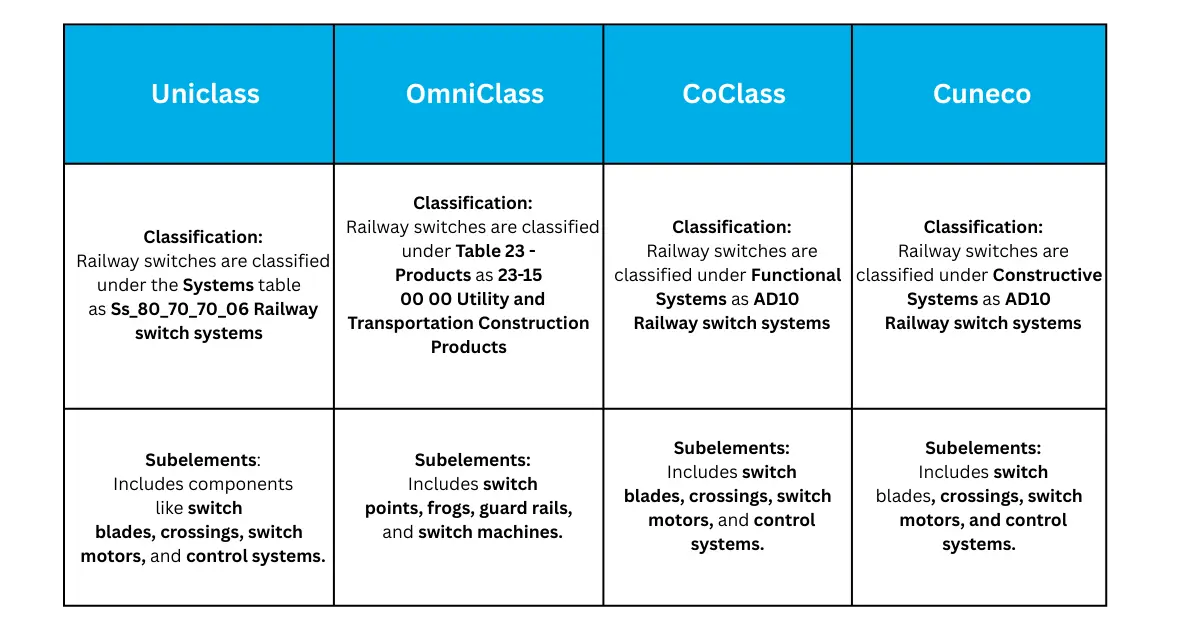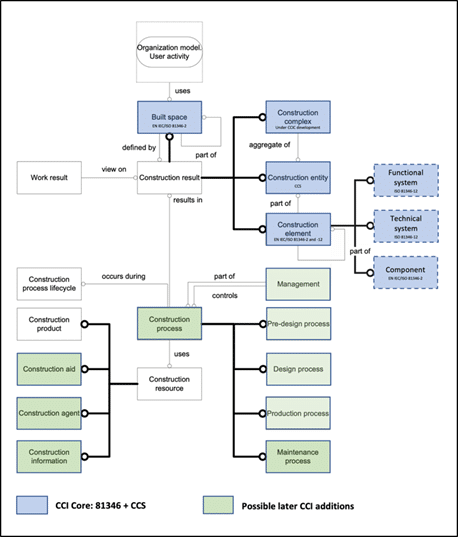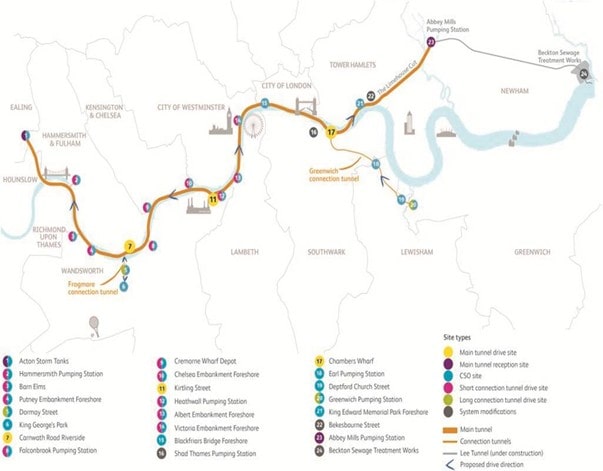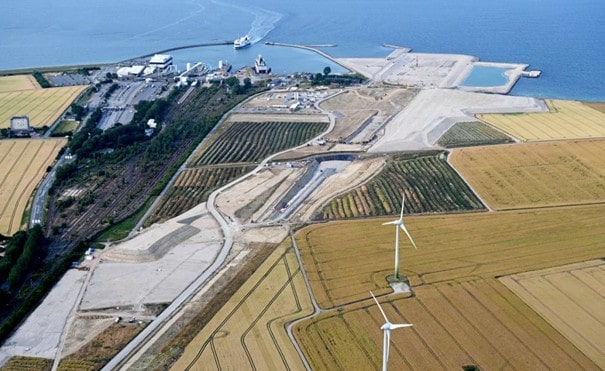From Theory to Practice: What Major Projects Teach Us About Classification Standards and How to Start
In our previous blog post, Why Standardized Classification Systems Are Essential for Effective Construction Management, we discussed the importance of standardized classification systems in construction and asset management — why they matter, how they work, and what makes global systems like Uniclass, OmniClass, CCS, and CoClass stand out.
In this follow-up, we bring you a closer look at how these systems are applied in practice and the concrete business value they deliver — from improved collaboration and decision-making to greater efficiency across every stage of a project.
Table of Content
Challenges of Data Mapping in Projects Using Different Classification Systems
Since each system uses different tables and subcategories for classification—reflecting unique approaches and regional standards—data mapping during project planning and management can be highly demanding.
Differences Between Classification Systems: Uniclass, OmniClass, CoClass, and Cuneco
We used the classification of a railway switch with its sub-elements as a simple example to demonstrate the complexity of managing a project where each stakeholder uses their own classification standard. With the help of Microsoft Copilot, we obtained the following comparison:

It’s worth noting that an appropriate initiative exists through the international non-profit organization Construction Classification International Collaboration (CCIC), which is actively working on the development of a unified and understandable language for building information management. The CCI system, first published in 2020, is designed for simultaneous use in different countries across all technical fields and industries. The CCI classification tables are based on the IEC/ISO 81346 standards, with additions from the Danish Cuneco classification system. CCI core tables are free to use globally.

Diagram: CCI Core Tables (in blue). The dashed boxes are additions to EN ISO 12006-2:2020. (Based on Figure 1 in EN ISO 12006-2:2020.)
Examples and Case Studies
Numerous events, conferences, meetups, workshops, and roundtables focus on the topic of standardization and defining classification systems at national or European levels. They showcase practical experiences from various projects where classification systems have proven to deliver significant benefits to project stakeholders—especially to investors. Some real-world examples are outlined below:
Water and Wastewater Industry: Application of the Uniclass System
The classification system has been used in asset management projects for water supply companies. In specific examples, Uniclass was applied to asset data management for water utilities in the UK, Australia, and New Zealand. The system helped standardize asset classification, improving data traceability and accessibility, which in turn enhanced data management and enabled better decision-making by leadership—resulting in more efficient operations and maintenance.
The Thames Tideway Tunnel Project in the UK
A major water and wastewater project in the UK, the Thames Tideway Tunnel, uses the Uniclass classification system. The aim of the project is to upgrade London’s sewage system to handle increased capacity and reduce overflows into the River Thames. The project involves the construction of a 25 km tunnel running beneath the river, designed to capture and store combined sewage and stormwater during heavy rainfall. It includes the construction of large shafts, pumping stations, and treatment plants.
The project uses classification for elements such as:
- Tunnels: classified under Ss50103085 Tunnel systems. This includes sub-elements such as tunnel linings, ventilation systems, and lighting systems.
- Pumping Stations: classified under Ss60403070 Pumping station systems. This includes components such as pumps, control systems, and power supply units.
- Treatment Plants: classified under Ss50501010 Wastewater treatment systems. This includes sub-elements such as biological treatment units, chemical treatment units, and physical treatment units.
By using the Uniclass classification in the Thames Tideway Tunnel project, communication, efficiency, quality, regulatory compliance, and lifecycle management were all significantly improved—contributing to the project’s success and coordination.
Standardization in Railway Infrastructure: The Ringsted-Fehmarn Project in Denmark
One of Denmark’s major railway infrastructure projects is the Ringsted-Fehmarn railway. This project involves significant upgrades and modernization efforts, including laying new tracks, electrification, and the implementation of a new digital signal and safety system (ERTMS) between Ringsted and the fixed Fehmarnbelt link. The goal is to create a fast and environmentally friendly railway connection between Denmark and Europe.
The Cuneco classification system is used to ensure standardized and efficient project management. The project classifies elements such as:
- Railway Switches: classified under AD10 Railway switch systems. This includes detailed sub-elements such as switch blades, crossings, and switch motors.
- Platforms: classified under Functional Systems. This includes components such as platform edges, canopies, and seating areas.
- Signal Systems: classified under Technical Systems. This includes components such as signal lights, control units, and communication devices.
BIM Integration and the Use of Classification Systems in Infrastructure
We have already covered information management using BIM (Building Information Modeling) in more detail in other posts, using the example of Utility management. However, in this specific example of infrastructure construction, it’s important to note that a classification system such as CCS facilitates BIM integration by providing a standardized framework for classifying all project elements. This ensures that all stakeholders have access to consistent and accurate information throughout the project lifecycle.
Using the Cuneco classification system in a railway station upgrade project can significantly improve communication, efficiency, and quality, resulting in a successful and well-coordinated project.
Additionally, in the context of better connecting Denmark with the EU through the realization of the project, the need for international compatibility of the classification system used is also worth emphasizing.
Global Application of the Uniclass System in Construction Projects
Uniclass has been used in various architectural projects to organize and categorize elements in BIM software, such as Revit, by tagging walls, doors, windows, and other components with unique Uniclass codes. By applying classification and BIM solutions from the design phase, collaboration with engineers, contractors, and consultants has improved through the creation of a universal language, reducing conflicts and errors during construction.
Across global construction projects, Uniclass has been implemented to meet higher building quality standards. The classification system has helped organize project information and ensure compliance with industry standards. Compared to initial examples of projects with tragic outcomes, those where Uniclass was used achieved exceptional results in terms of construction quality and project efficiency, demonstrating the relevance of classification systems in large construction projects.
Standardization as the Foundation of Effective Management
The standardization of classification systems brings numerous proven benefits, as seen in the previously mentioned and many other projects across industries such as infrastructure, energy, water management, construction, and more.
The key benefits of classification systems when paired with appropriate supporting software include:
Lifecycle Management
- A unified classification system supports the entire project lifecycle — design, operation and maintenance — making future upgrades easier and ensuring all elements are documented.
Improved Communication and Collaboration
- Standardized classification ensures that all documentation is clear and consistent, creating a common language for all project participants. This reduces misunderstandings, enhances communication, and enables teams to collaborate more effectively.
Increased Efficiency and Productivity
- Using a unified classification system simplifies project processes, reducing the time spent finding and managing information. Classification helps coordinate different project activities, ensuring that all elements are consistently categorized and managed.
Enhanced Quality and Accuracy
- The use of a single classification system ensures that all project element data is accurate and up to date, which is essential for decision-making and project management.
Quality Assurance
- A standardized approach helps maintain high quality standards throughout the project—from design to construction and asset maintenance—significantly impacting safety over the asset’s lifecycle.
Regulatory Compliance, International Compatibility, and Reporting
- A unified classification system supports compliance with industry standards and regulations, facilitating the fulfillment of legal and regulatory requirements with precise and traceable reporting. This is crucial for regulatory submissions and audits. Aligning classification systems with international standards such as ISO 19650, ISO 12006, and ISO 81346 ensures that asset construction and maintenance are compatible with global best practices. Software solutions and project methodologies that use such classification systems are well-suited for international projects like major EU infrastructure initiatives, ensuring successful delivery within financial and time constraints.
Despite ongoing development efforts for classification systems such as CCI, CCS, CoClass, Uniclass 2015, and OmniClass, there is currently no international consensus on a shared classification system. The lack of a standard classification system for the construction and asset management industry highlights the complexity of defining a globally applicable framework. It is highly recommended for all investors, as well as the design offices that support them, to use well-written and robust specifications guided by the recommendations of classification system providers such as CCI, NBS (Uniclass tables – explained) and associations promoting standardization and solutions such as buildingSMART or CDIH. A robust, standardized specification thoroughly describes every material, product, system, and process to be used and is key to the success of construction projects. It can prevent project delays, unexpected costs, contract disputes, and litigation.
Practical Steps for Implementing a Classification System
We encourage you to plan and implement a classification system in your upcoming projects and business environment using the following helpful steps:
- Choose a suitable classification system that aligns with your industry and national context.
- Familiarize yourself with the selected classification system and its purpose.
- Integrate the classification system into your business processes, from project planning and construction execution to asset management.
- Use CDE and BIM software that allows you to apply the chosen classification system.
- Ensure all project documentation, including specifications and drawings, uses the classification system for consistency.
- Train your team to ensure everyone understands how to use the classification system effectively.
- Start implementing the classification system in a small project or a specific part of a larger project to adapt the organization to the new system.
- Monitor progress, review how the system is being used, and make adjustments as needed to improve efficiency and accuracy.
To Conclude
Ultimately, managing construction projects involves massive efforts in process, information, and documentation management, alongside information exchange in a complex environment with many potential external stakeholders. This makes the use of appropriate information systems, like FieldWork 4, crucial.
With support for the simultaneous use of multiple compatible classification systems, such solutions can deliver the previously mentioned benefits.
Want to talk to us about your business needs?

Marin Curavić
Share
More from ASEE
Türk Ticaret Bank Selects ASEE InACT® External Fraud Prevention
Türk Ticaret Bank, Türkiye’s first privately established commercial bank
Garanti BBVA International Boosts Fraud Protection with ASEE InACT®
Garanti BBVA International, a provider of corporate banking, trade
SWIFT & SEPA Projects Successfully Delivered in Serbia and Montenegro
ASEE has successfully executed a series of complex regulatory initiatives across











